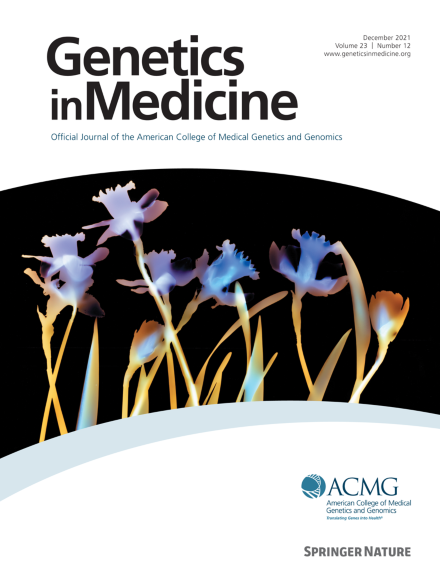Defining next steps in the clinical implementation of polygenic scores: A landscape analysis of professional groups’ perspectives
IF 6.6
1区 医学
Q1 GENETICS & HEREDITY
引用次数: 0
Abstract
Purpose
Professional perspectives on polygenic scores (PGS) have surged in-line with significant research investment. It is unclear whether these perspectives are leading the health care sector toward a comprehensive implementation approach. This scoping review addresses this knowledge gap, analyzing available publications for concurring and discordant perspectives.
Methods
Methodology followed the Arksey and O’Malley framework. Six databases were systematically searched alongside screening of professional websites. Descriptive and deductive content analyses were completed using the Consolidated Framework for Implementation Research and the Expert Recommendations for Implementing Change compilation.
Results
A total of 28 perspectives were analyzed. Implementation was supportable if evidentiary thresholds for clinical utility could be met, with exceptions being in vitro fertilization and prenatal settings. Evidence base and relative advantage of PGS were the strongest determinants of implementation success, with resourcing also being emphasized. Key strategies included ongoing research, developing education materials, and facilitating relay of information. Attention was not paid to leadership nor to stakeholder interrelationships. There was no recommended framework to facilitate the clinical implementation of PGS.
Conclusion
The steps toward executing implementation remain vague. Commonalities in perspectives suggest value in a transferable approach. If PGS are to be successful, policy makers and leaders must consider effective resource allocation by addressing priority barriers and utilizing implementation methodologies. Continuing efforts to establish PGS clinical utility and value, guidelines and policies, and educational materials are needed.
确定临床实施多基因评分的下一步:专业小组观点的景观分析。
目的:随着大量的研究投入,多基因风险评分(PGS)的专业观点激增。目前尚不清楚这些观点是否正在引导医疗保健部门走向全面的实施方法。这一范围审查解决了这一知识差距,分析了现有出版物的一致和不一致的观点。方法:方法学采用Arksey和O'Malley框架。在筛选专业网站的同时,系统地检索了六个数据库。描述性和演绎性内容分析是使用实施研究综合框架和实施变革专家建议汇编完成的。结果:共分析了28个视角。如果能够满足临床应用的证据阈值,则可以支持实施,但体外受精和产前设置除外。PGS的证据基础和相对优势是实施成功的最重要决定因素,资源也得到强调。主要战略包括正在进行的研究、编写教育材料和促进信息传递。没有关注领导力,也没有关注利益相关者的相互关系。没有推荐的框架来促进PGS的临床实施。结论:执行实施的步骤仍然模糊。观点的共性表明了可转移方法的价值。如果PGS要取得成功,决策者和领导人必须通过解决优先障碍和利用实施方法来考虑有效的资源分配。需要继续努力建立PGS的临床效用和价值、指导方针和政策以及教育材料。
本文章由计算机程序翻译,如有差异,请以英文原文为准。
求助全文
约1分钟内获得全文
求助全文
来源期刊

Genetics in Medicine
医学-遗传学
CiteScore
15.20
自引率
6.80%
发文量
857
审稿时长
1.3 weeks
期刊介绍:
Genetics in Medicine (GIM) is the official journal of the American College of Medical Genetics and Genomics. The journal''s mission is to enhance the knowledge, understanding, and practice of medical genetics and genomics through publications in clinical and laboratory genetics and genomics, including ethical, legal, and social issues as well as public health.
GIM encourages research that combats racism, includes diverse populations and is written by authors from diverse and underrepresented backgrounds.
 求助内容:
求助内容: 应助结果提醒方式:
应助结果提醒方式:


